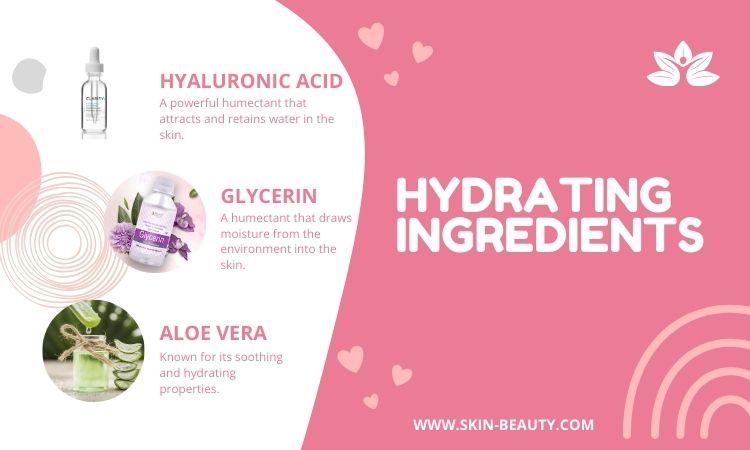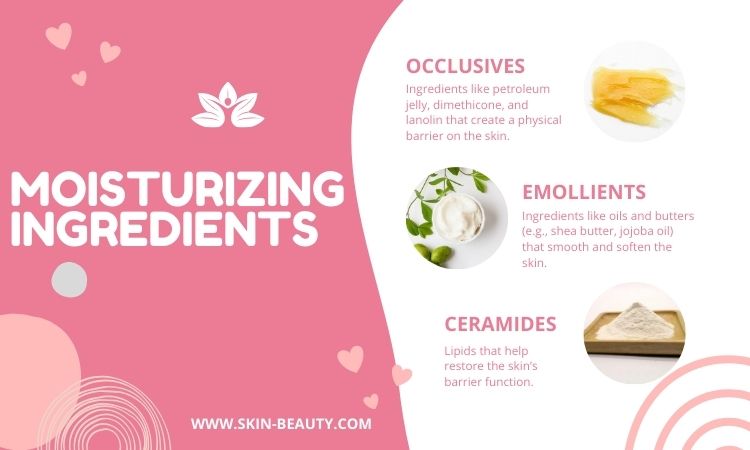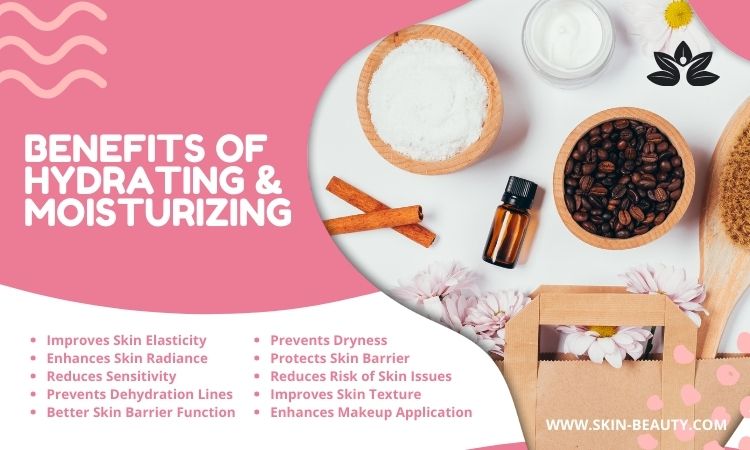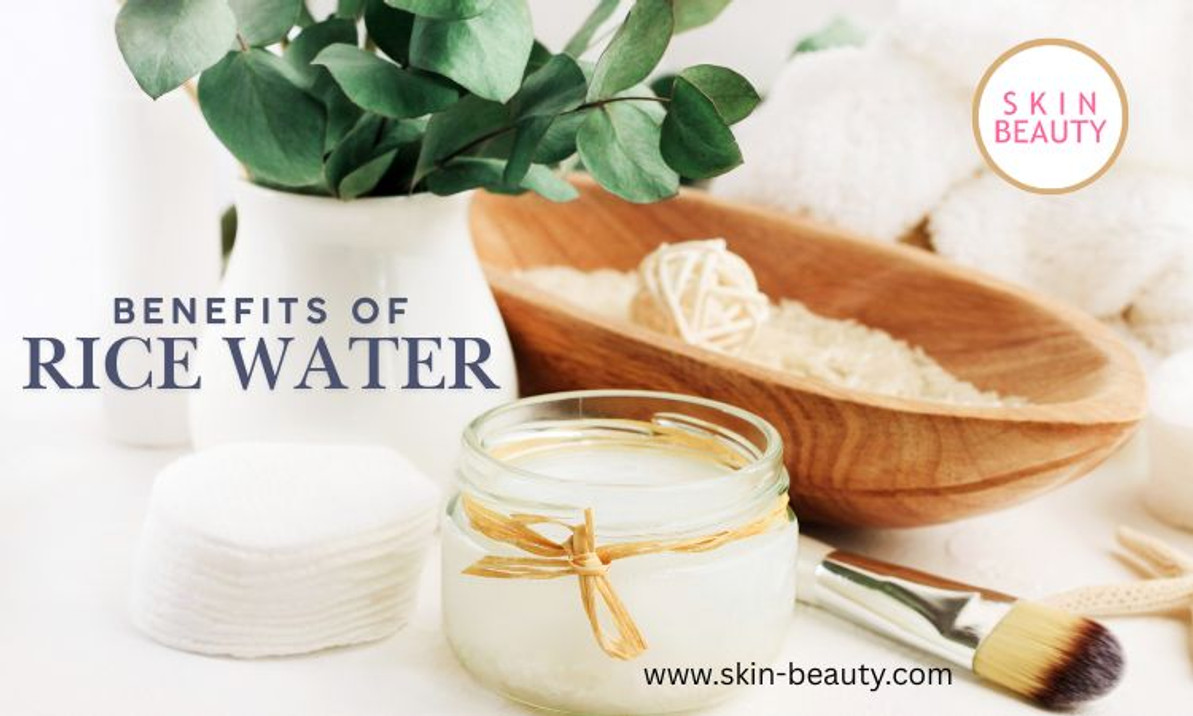Hydrating vs. Moisturizing: Understanding the Difference in Skincare
Understanding the Difference Between Hydrating and Moisturizing in Skincare
In the skincare world, terms like "hydrating" and "moisturizing" are often used interchangeably, but they refer to different aspects of maintaining healthy skin. Understanding the difference between hydration and moisture is crucial for selecting the right products and achieving optimal skin health. In this article, we’ll explore what these terms mean, how they impact your skin, and how to effectively incorporate both into your skincare routine.
What is Hydration and Moisturization in Skincare?
Hydration in skincare refers to the process of restoring and maintaining the water content in the skin, essential for its health and appearance. It plays a crucial role in ensuring that the skin cells are plump and functioning optimally. On the other hand, moisturizers are products designed to lock in moisture, preventing water loss and maintaining the skin's hydration levels.
Definition and Importance of Hydration in Skincare
Hydration refers to the process of adding water to the skin. Hydrating products are designed to increase the water content within the skin cells, leading to plumper, more supple skin. Dehydrated skin lacks water and can appear dull, tight, and flaky.
Understanding the Role of Moisturizers in Skincare
Moisturizing refers to the process of sealing in moisture to prevent water loss. Moisturizers are designed to create a barrier on the skin’s surface, trapping moisture and keeping the skin hydrated. Dry skin lacks oil and can feel rough and itchy.
Distinguishing Between Hydrating and Moisturizing Products
While hydrating products focus on increasing water content in the skin, moisturizing products aim to prevent water loss and maintain hydration levels. Understanding this difference is key to choosing the right products for your skincare routine.
Hydrating Products
Key Ingredients for Hydration:
- Hyaluronic Acid: A powerful humectant that attracts and retains water in the skin.
- Glycerin: A humectant that draws moisture from the environment into the skin.
- Aloe Vera: Known for its soothing and hydrating properties.
How Hydrating Products Work:
- Mechanism: Hydrating products typically use humectants to draw water into the skin cells.
- Texture: These products are often lightweight, like serums and gels, and absorb quickly into the skin.
Signs Your Skin Needs Hydration:
- Tightness: Your skin feels tight and uncomfortable, especially after cleansing.
- Dullness: Lack of radiance and a generally lackluster complexion.
- Fine Lines: More noticeable fine lines, particularly due to dehydration.

Moisturizing Products
Key Ingredients for Moisturizing:
- Occlusives: Ingredients like petroleum jelly, dimethicone, and lanolin that create a physical barrier on the skin.
- Emollients: Ingredients like oils and butters (e.g., shea butter, jojoba oil) that smooth and soften the skin.
- Ceramides: Lipids that help restore the skin’s barrier function.
How Moisturizing Products Work:
- Mechanism: Moisturizers use occlusives and emollients to lock in moisture and protect the skin barrier.
- Texture: These products are often thicker and creamier, providing a protective layer over the skin.
Signs Your Skin Needs Moisture:
- Rough Texture: Your skin feels rough, flaky, or scaly.
- Itchiness: Persistent itchiness or irritation, especially in dry climates.
- Cracks and Peeling: Severe dryness can lead to cracking and peeling of the skin.

How Does Skin Type Affect Hydration and Moisturization?
Your skin type significantly impacts its hydration levels and requirements. Dry skin tends to lack natural oils, leading to moisture loss, while oily skin can still experience dehydration despite excess oil production.
Impact of Skin Type on Hydration Levels
Each skin type has unique characteristics that influence its hydration needs. Understanding how your skin type affects hydration can help you select suitable products to address any deficiencies.
Choosing the Right Products for Different Skin Types
Tailoring your skincare routine to your skin type is essential for maintaining its health and balance. Dry skin may benefit from richer, more emollient moisturizers, while oily skin can benefit from lightweight, oil-free hydration solutions.
Dealing with Dry Skin and Oily Skin Hydration Challenges
For those with dry skin, incorporating hydrating ingredients like hyaluronic acid can help replenish moisture and improve skin texture. Oily skin types should opt for non-comedogenic products that hydrate without clogging pores.
Benefits of Hydration and Moisturization for Skin Health
Maintaining proper hydration levels in the skin has a range of benefits, including supporting the skin barrier function, enhancing overall skin health, and preventing water loss.
Effects of Proper Hydration on Skin Barrier Function
A well-hydrated skin barrier is better equipped to defend against environmental stressors, pollutants, and bacteria. It helps prevent moisture loss and keeps the skin cells nourished and protected.
Enhancing Skin Health with Hyaluronic Acid and Other Hydrating Ingredients
Hyaluronic acid is a potent hydrating ingredient that attracts and retains water, promoting plump and hydrated skin. Including hydrating ingredients in your routine can strengthen the skin's moisture barrier and improve its overall appearance.
Preventing Water Loss and Maintaining Hydrated Skin Cells
Using products that lock in moisture and prevent trans-epidermal water loss, you can keep your skin hydrated and maintain healthy skin cells. Consistent hydration and moisturization contribute to a radiant complexion and improved skin texture.

How to Incorporate Hydrating and Moisturizing Products into Your Skincare Routine
Developing a personalized skincare routine based on your hydration needs is essential for promoting skin health and vitality. Understanding the importance of both hydration and moisturization can help you achieve optimal results.
Step-by-Step Routine:
- Cleanse: Start with a gentle cleanser to remove dirt, oil, and makeup without stripping the skin of its natural oils.
- Hydrate: Apply a hydrating serum or essence immediately after cleansing while your skin is still damp. Look for products with hyaluronic acid, glycerin, or aloe vera.
- Moisturize: Follow up with a moisturizer suited to your skin type. For oily skin, choose a lightweight, oil-free moisturizer. For dry skin, opt for a richer, more emollient formula.
- Seal: In particularly dry climates or for very dry skin, consider adding an occlusive layer at night, such as a sleeping mask or a thin layer of petroleum jelly, to lock in moisture.
- Protect: During the day, always finish with a broad-spectrum sunscreen to protect your skin from UV damage, which can exacerbate dryness and dehydration.
Developing a Personalized Skincare Routine Based on Hydration Needs
Identifying your skin's needs and concerns is the first step in creating an effective skincare routine. Hydrating and moisturizing products at the right stages can help you address various skin issues and maintain a healthy complexion.
Understanding the Importance of Locking in Moisture for Healthy Skin
Locking in moisture after hydrating your skin ensures long-lasting hydration and protection. Using occlusive products can create a barrier that seals in moisture and prevents dehydration.
Identifying the Best Hydrating and Moisturizing Products for Your Skin
Selecting suitable hydrating and moisturizing products that cater to your skin type and concerns is crucial for achieving the desired results. Consider factors like ingredients, texture, and formulation when choosing skincare products.
Tips for Maintaining Skin Hydration and Moisture Balance
Keeping your skin adequately hydrated and moisturized requires consistent care and attention. Recognizing the signs of dehydration and taking corrective measures can help you maintain a healthy moisture balance.
Recognizing Signs of Dehydrated Skin and Taking Corrective Measures
Dullness, tightness, and flakiness are common signs of dehydrated skin. Adjusting your skincare routine and incorporating hydrating products can replenish lost moisture and restore skin health.
Establishing a Routine to Keep Your Skin Hydrated Throughout the Day
Hydrating your skin in the morning and evening and using products that lock in moisture can help maintain hydration levels throughout the day. Consistent hydration is key to achieving plump, radiant skin.
Finding the Right Balance Between Hydrating and Moisturizing Products
Both hydration and moisture are essential for maintaining healthy, balanced skin. While hydrating products replenish water content, moisturizing products lock in that hydration and prevent water loss. By understanding the difference and incorporating both types of products into your skincare routine, you can achieve a complexion that is not only hydrated but also supple, smooth, and resilient. Whether your skin is oily, dry, combination, or sensitive, the right hydration and moisture balance will help you maintain optimal skin health.
Recent Posts
-
Best Face Wash for Sensitive Skin
My Journey to Finding the Best Face Wash for Sensitive Skin If you’re reading this, you probab …Apr 22nd 2025 -
Best Under-Eye Bags Cream and Treatment
Best Under-Eye Bags Cream and Treatment Do you have the dreaded under-eye bags that make you look l …Apr 14th 2025 -
Rice Water for Skin Benefits
Rice Water for Skin Benefits Rice water for skin has become a viral beauty trend that is supposed t …Apr 4th 2025




